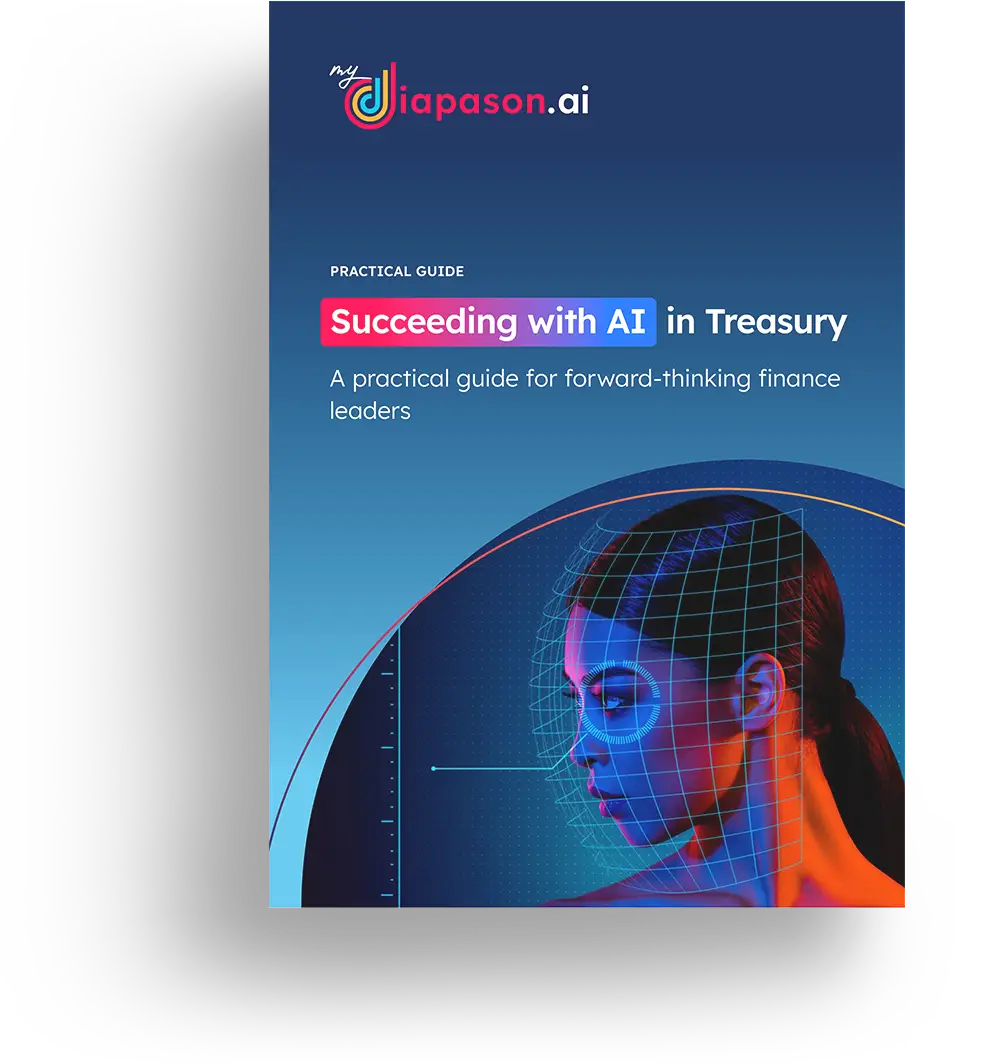
How to Digitize Business Processes? Key Steps &Benefits
Financial flows are becoming increasingly complex and fast-paced. For Finance and Treasury Directors, digitization has become imperative. Beyond mere dematerialization, it involves thoroughly rethinking processes to gain efficiency, control, and added value. Key technologies include RPA, AI, and Blockchain. But what are the challenges and benefits? How do you lead a digitization project? What best practices should be adopted? Here’s an overview of the keys to success, illustrated by concrete case studies.
Understanding the Challenges of Process Digitization
What is Business Process Digitization?
Digital transformation of businesses is a complex and often misunderstood subject. Contrary to the common belief that redesigning a website and implementing new CRM software suffice, true digital transformation goes far beyond these superficial measures. It involves deeply digitizing internal processes to optimize the organization and operations of the company. This transformation aims to fully integrate digital technologies into all aspects of the business, thereby enhancing efficiency and agility.
For a company, digitizing processes means using digital technologies to automate and optimize tasks, information flows, and collaboration modes while ensuring traceability and security of operations.
What are the Levers for Digitizing Business Processes?
When applied to corporate treasury, digitization relies on several key technologies:
- RPA (Robotic Process Automation) automates repetitive and time-consuming tasks such as bank reconciliations via software robots.
- Artificial Intelligence (AI) provides predictive analysis capabilities (anomaly detection, cash flow forecasts) through machine learning applied to Big Data.
- Blockchain enables real-time payments and facilitates supply chain financing through smart contracts.
- Data Analytics offers a 360° view of cash flows by aggregating multi-source data and providing powerful visualization tools..
What are the Challenges for the Treasury Function?
With these innovations, Finance and Treasury Departments can optimize their cash management, leading to concrete benefits:
- Significant productivity and time gains by eliminating low-value-added tasks. This allows the company and its teams to focus on analysis and advisory activities.
- Better compliance and traceability by securing the entire chain and facilitating controls and audits with a comprehensive digital audit trail.
- Proactive risk management (currency, interest rate, liquidity, fraud) through dynamic dashboards, stress test scenarios, and intelligent alerts.
- Real-time cash management, providing instant visibility into positions and facilitating decision-making.
In summary, digitizing treasury processes secures financial flows while creating additional value. It positions the Treasury function as a true business partner, driving performance and growth. For more details on the fundamentals, you can consult our comprehensive guide on cash flow management.
Key Steps in a Process Digitization Project
A business process digitization project follows a structured approach aligned with the company’s strategic priorities. The organization typically follows three key steps.
Diagnosing the Current State
This involves mapping all current processes, understanding necessary operations, identifying friction points (manual, low-value, high-risk tasks), and prioritizing use cases.
Objective: Identify “quick wins,” which are rapid and obvious improvements with high ROI, to give the project momentum. This diagnostic also helps define key indicators to measure progress.
This mapping stage will facilitate subsequent process modeling. Various solutions exist for implementation and internal communication, including process diagram methods and mapping tools to visualize workflow steps. Business Process Management (BPM) software provides a broader view of overall processes and management within a company.
Project Planning
Based on the diagnosis, a roadmap is established, detailing the organization of different projects, required resources (skills, budget), timeline, and deliverables.
A critical success factor is involving the right stakeholders early in this phase: treasury and finance, IT, procurement, operations. Change management should be anticipated with a communication and training plan to gain buy-in.
Operational Process Modeling
The concept of workflow is crucial in digitizing business processes, as it models all tasks, steps, and resources necessary to complete a process, aiming to optimize and automate them.
A workflow represents the sequence of tasks from initiation to completion, involving various actors, tools, and deadlines. For example, in cash management, the workflow includes steps such as collecting financial data, forecasting cash flows, approving payments, communicating with financial institutions, bank reconciliation, and generating financial reports. Each process participant must know precisely which task to perform and to whom to hand it off next.
The main challenge of workflow in financial process digitization is streamlining these steps and automating low-value repetitive tasks, allowing treasurers to focus on more strategic activities like financial analysis and risk management. Automation through appropriate tools ensures the overall process runs smoothly, increases efficiency, and reduces errors, contributing to better liquidity management and optimization of internal financial resources.
Criteria for Choosing an Appropriate Digitization Solution
The tool is a critical success factor in digital transformation. However, given the plethora of treasury management solutions and “Treasury-as-a-Service” offerings, how do you make the right choice? Here are some criteria to consider in a treasury management software.
Functional Coverage
The solution should address all treasury processes with dedicated modules: bank communication, payments, cash management, forecasts, risk management, financing, guarantees, regulatory compliance. Increasingly, treasury software integrates AI for advanced analytics (fraud detection, intelligent matching).
Interoperability
The solution’s ability to interface with the existing IT system is crucial for end-to-end automation. Verify connectivity with your ERP (certification), compatibility with your banks’ formats, and availability of open, secure APIs to interconnect your tools. SaaS deployment facilitates this integration.
Agility and Scalability
The regulatory and technological environment evolves quickly. Your digitization tool should adapt easily. Inquire about the vendor’s roadmap, innovation strategy, and partnerships (Fintech, GAFA). Flexible configuration by your teams and scalable pricing (by module, pay-per-use) are real advantages.
Geographic Coverage
If your company is multinational, the solution must support different currencies, regulations, GAAPs, and accounting schemas. Vendor presence in your key countries is an asset. The availability of local payment formats and the ability to deploy regional payment factories can also make a difference.
Cybersecurity
As cyber threats intensify, your financial flow digitization solution must be secure end-to-end. This includes granular rights management, strong authentication, encryption, activity monitoring. Request the vendor’s security policy, continuity plan, and certifications (ISO).
Support
Beyond functionalities, evaluate the vendor’s ability to be a true long-term partner. A digitization project spans the long term and involves the entire company. Assess offered services: project scoping, configuration assistance, data migration, training, and demand a dedicated project team to guide you through each step.
Digitizing Treasury in 5 Steps
Building a treasury process digitization project may seem complex. However, following a structured methodology can set you up for success.
Step 1 : Audit the Current State
Analyze your current treasury processes end-to-end, from initiating a supplier payment to reconciling a bank statement. Identify manual tasks, delays, and sources of human error. Model financial flow management and identify automation opportunities.
Step 2 : Define Your Priorities
Based on the audit, set quantified digitization goals: reduce processing costs, improve productivity, speed up cash flow forecast timelines, increase straight-through processing rates. Prioritize projects based on ROI and ease of implementation, focusing on those that bring immediate satisfaction.
Step 3 : Choose Your Target Platform
Define necessary technological components: validation workflow, automatic invoice reading, bank communication module, predictive analysis tools. Challenge treasury and payment software vendors on their AI roadmap, bot solutions, and API capabilities. Ensure configurability by your staff and ERP interfacing.
Step 4 : Prototype and Deploy
Start with a pilot on a limited scope (a subsidiary, a specific process). The goal is to test your solution, adjust configurations, and measure performance. Monitor KPIs, capitalize on lessons learned, and gradually expand the scope with well-trained and motivated local champions.
Step 5 : Continuously Improve
A digitization project is never finished. Monitor your KPIs, engage users, and explore new use cases from Fintech and neo-banks. The optimization of a complex function like Treasury in a large organization thrives on successive small victories. Each convinced stakeholder, each process improvement, each gain in documentation quality adds to the project.
By providing this practical guide with concrete actions at each step, we equip the Finance and Treasury Director with an initial method. The goal is that after reading this, they have a clear and actionable plan for their company.
Pitfalls to Avoid for Successful Digitization
A treasury process digitization project can quickly go off course without a structured and guided approach. Avoid these pitfalls:
- Undefined Objectives: Have a clear vision of expected outcomes (e.g., reduce closing delay by X days, automate X% of tasks). Focus on a handful of precise KPIs and regularly measure their progress.
- Intimidating Functional Scope: Trying to digitize everything at once can exhaust your teams. Focus first on the most critical and time-consuming processes (bank reconciliation, payment management). Achieve a quick win, then another.
- Resistance to Change: Even a high-performing tool won’t be adopted if perceived as a threat by your teams. Training and interaction are crucial. Make power users ambassadors of change, and clearly communicate support (coaching, role adjustment).
- Shadow IT: Digitization efforts that don’t involve the IT department risk security gaps and data silos. Co-create your roadmap with your CTO, CISO, and DPO. Ensure GDPR compliance and security certifications for SaaS solutions.
An overly ambitious transformation project may struggle to deliver value quickly. It’s better to phase and start with the most mature and high-impact processes. For mid-sized companies, turnkey software offers a good compromise between functional richness and quick implementation.
Diapason’s Role in Your Digitization
Digitizing treasury processes is essential for treasurers seeking increased efficiency and strategic management. Choosing the right technology partner is crucial for a successful transformation.
MyDiapason solutions are designed by experts to meet treasurers’ needs. They offer an integrated, modular response. Available in SaaS or On-Premise, they automate all your processes through three complementary modules:
- MyDiapason Cash to optimize cash management
- MyDiapason Payment to secure payments
- MyDiapason Risk to manage financial risks.
This IT solution is natively interfaced with your existing systems, configurable and scalable, supporting your growth over time, as evidenced by over 10,000 daily users (Fnac Darty, France TV, Eiffage…).
Beyond the platform, Diapason offers end-to-end support to accelerate your digitization project: consulting, implementation, change management, operational assistance.
About the Author
Valérie Lafaury, Field Marketing Manager
Valérie is the Field Marketing Manager of Diapason, the solution that streamlines corporate treasury management. She crafts press releases, in-depth articles, and timely pieces on topics related to the treasurer’s profession. Her goal is to provide treasurers with useful and practical information to optimize their treasury management.








